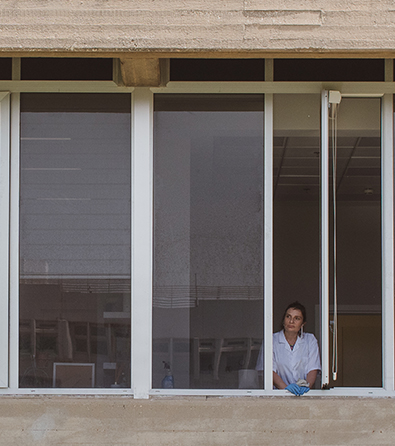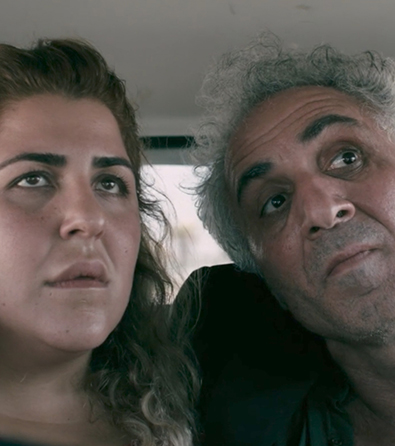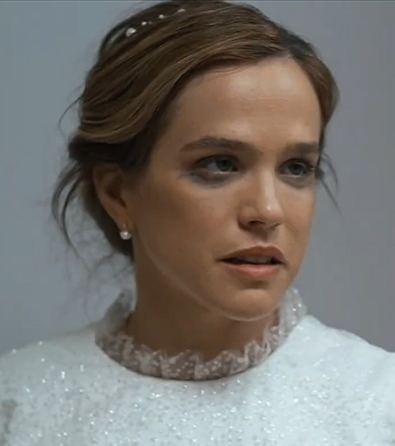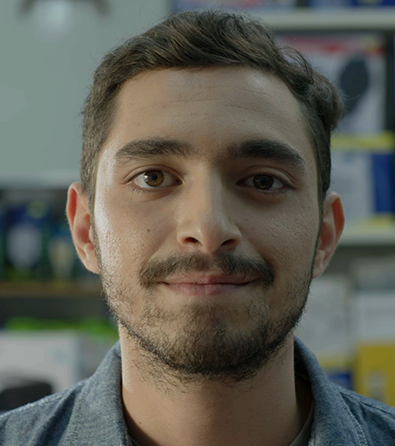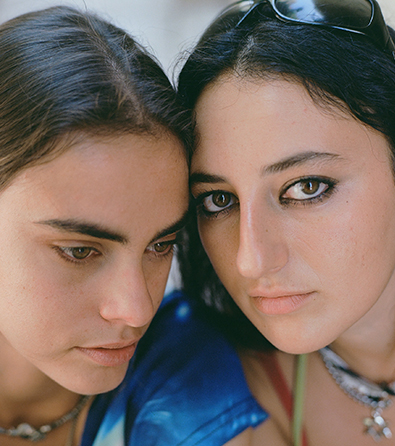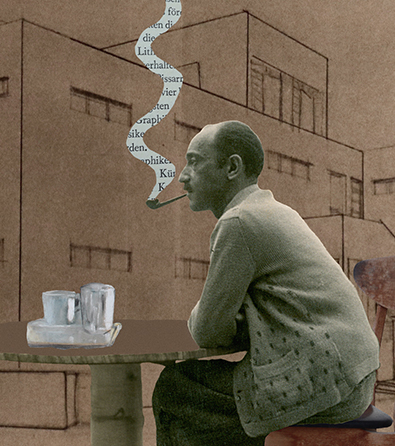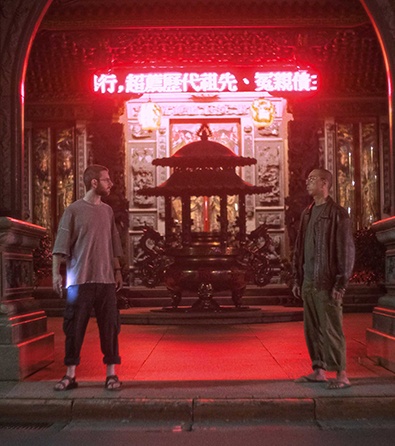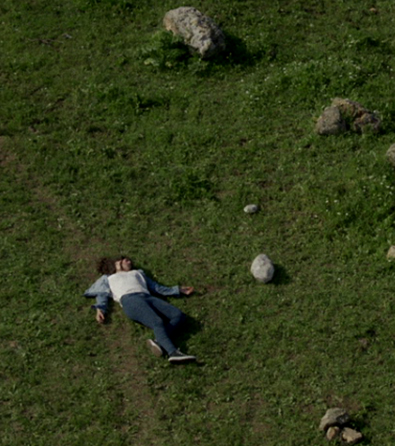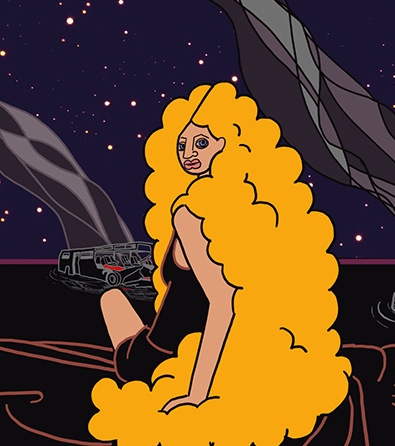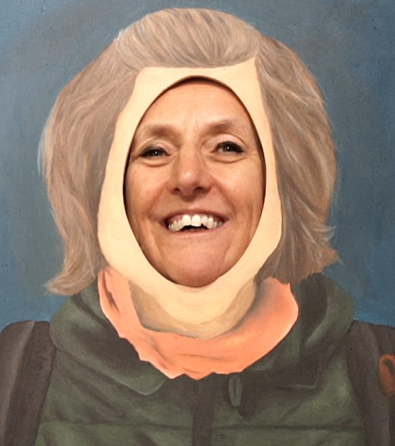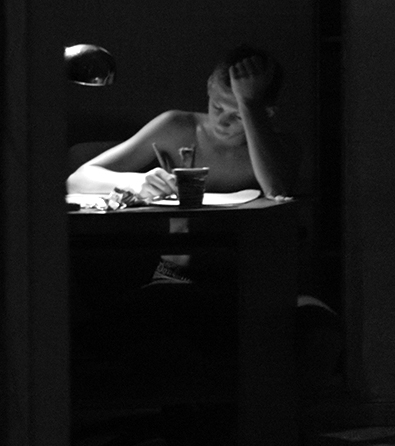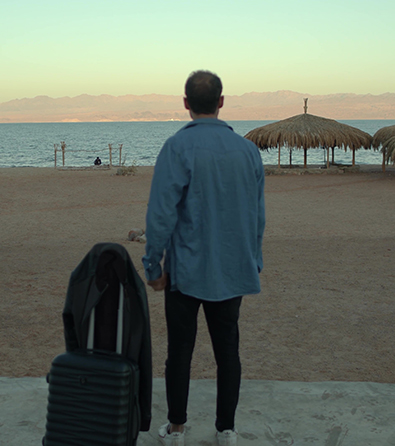The short animation film Gen Tree (3 minutes) is available at the top of this page.
* To watch this film, please approve YouTube/Vimeo cookies via the blue cookie icon at the bottom left of the screen
Gen Tree, an animated film by Ronni Shalev, Alon Sharabi, and Hod Adler, delves into the gap between today’s younger and older generations. Through a mix of animation and documentary-style interviews, adults, children, and teens express their views on the modern virtual and technological landscape, reflecting on generational divides and each generation’s self-perception alongside its view of the other. A central theme is the contrasting attitudes toward the internet: while teens experience it as a personal and safe space, older generations often find it challenging to navigate and remain more connected to the tangible, physical world.
The film employs a cinematic technique in which recorded interviews are animated, blending documentary realism with fantastical animation to add new layers of meaning to what the interviewees say. An early example of this approach is “Creature Comforts” (1989) by Aardman Studios, which used interviews with British citizens talking about their homes. Their voices were paired with animated animals, giving the impression that the animals were describing human experiences. This fusion of realistic, everyday narratives with colorful animation creates a clear irony, a comedic synthesis that explores British citizens’ living conditions while humorously critiquing the living conditions of zoo animals.
Gen Tree does not take this concept to an extreme; the animated characters remain human. Yet, it harnesses the limitless potential of animation to create visuals that uniquely echo the generational gap. The core image used is that of an enormous tree: the older generation, living more grounded lives, is positioned near the tree’s trunk, while the youth sit on its branches. This image carries multiple meanings, which is part of its beauty: it visually separates the older generation on the ground from the young people in the treetops. However, this separation is not absolute, as the tree and its crown depend on the roots for nourishment and survival. The film also explores how kids and adults experience the real world, with or without the mediation of phones. Are the kids able to see the ground, or are they floating too high to connect with it?
The abstraction created by the animation emphasizes the film’s allegorical side – we do not see realistic characters but rather illustrated figures that distance us from the literal meaning of their words. In this way, we experience the characters as concepts, “kids” and “adults,” rather than as specific individuals. Accordingly, the creators make a visual distinction: the kids are drawn in bold, vibrant lines, while the adult characters are depicted with faded lines and muted colors. This separation highlights the cyclical nature of life that connects the generations: as we grow older, we descend from the trees to the ground, begin to lose some of our vitality and feel separate from the younger generation that will take our place among the treetops.
The cyclical process is beautifully expressed through the gaze as a motif: kids are accustomed to looking at others through screens and observing their actions on social media. Yet the act of watching and the need to see what others are doing are fundamentally human traits, as the film illustrates, including through an adult character who peers through binoculars at the kids in the trees. In this way, the film showcases the different ways generations engage in similar behaviors. The adult character remarks that she cannot understand why kids are stuck to their screens all day, missing out on real-world fun, yet her act of watching them introduces a layer of irony, as her actions differ only in method, not in purpose. This motif reinforces the portrayal of generational gaps as fundamentally similar, and the humor in this representation prevents the film from feeling shallow or superficial.
In every generation, adults are portrayed as those who do not understand the younger generation and refuse to comprehend their feelings and perspectives. Each generation believes the younger one is somehow deficient, and each considers itself distinct from those that came before, yet we are all alike, just with minor adjustments. In Gen Tree, despite their reservations about the internet and the younger generation, the adults confess that they actually enjoy using social media and phones. Meanwhile, the younger generation, despite their pride, still needs the adults. For example, at the beginning of the film, Yuval’s parents call her to go to her judo class, but she continues leaping among the treetops. At the end of the film, as she’s late for her class, she comes back down to her parents, who drive her there. She then corrects them, saying the class is karate, not judo. Through this, the film underscores that sometimes adults don’t listen to the younger generation, and not only the other way around.
Whether we like it or not, we are connected to the generations that came before us and will be connected to those that come after us, even if they feel foreign to us and not entirely understandable. We should remember that they likely think of us as we think of the generations before us, but at the very least, we must try to understand them, because, in the end, we will find ourselves traveling together in the same direction.
The short animation film Gen Tree was produced in 2020 as part of an undergraduate final project at the Department of Screen-Based Arts, Bezalel Academy of Arts and Design.
